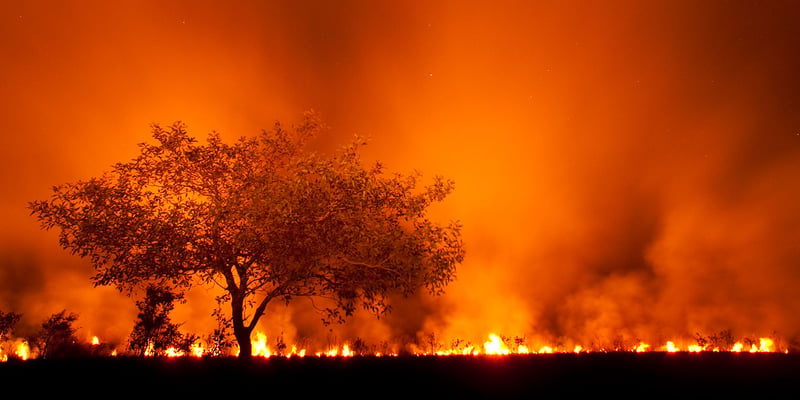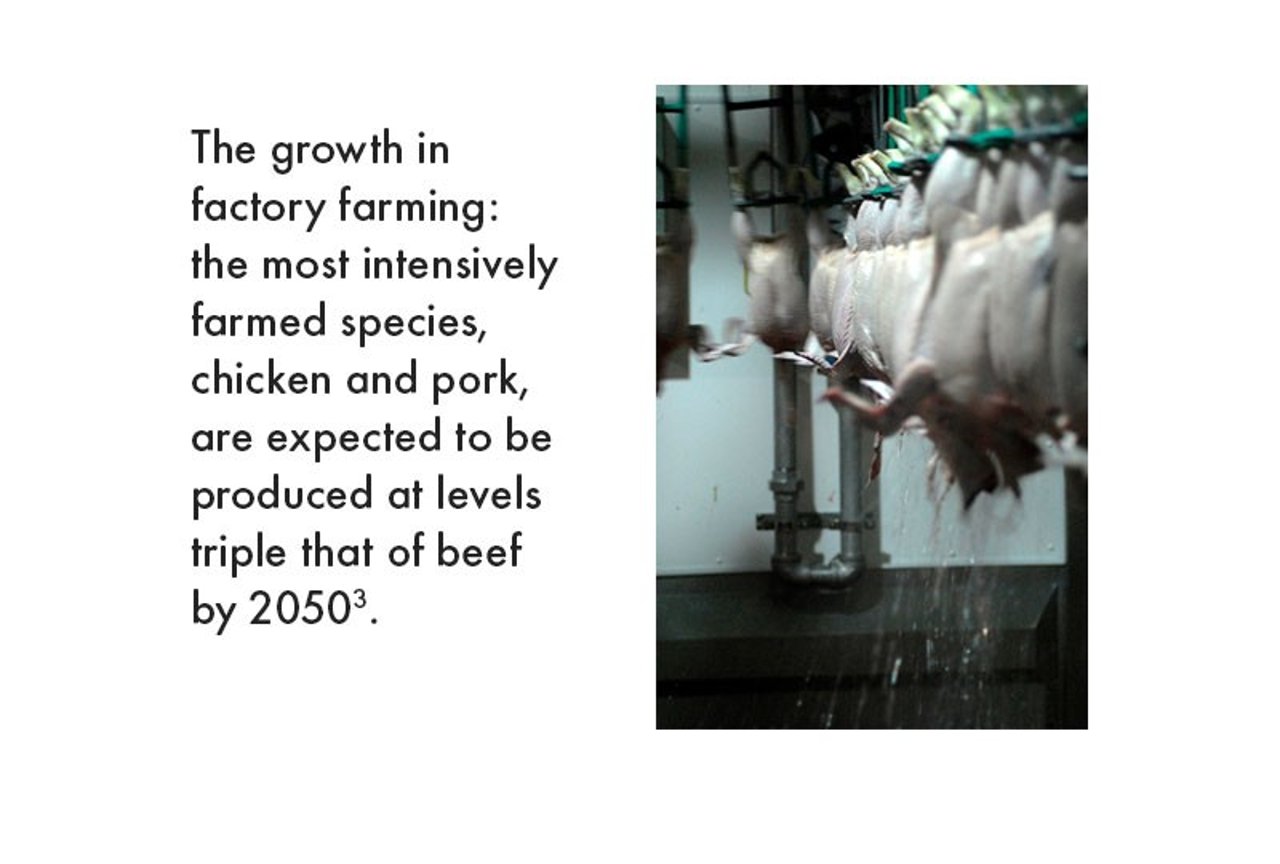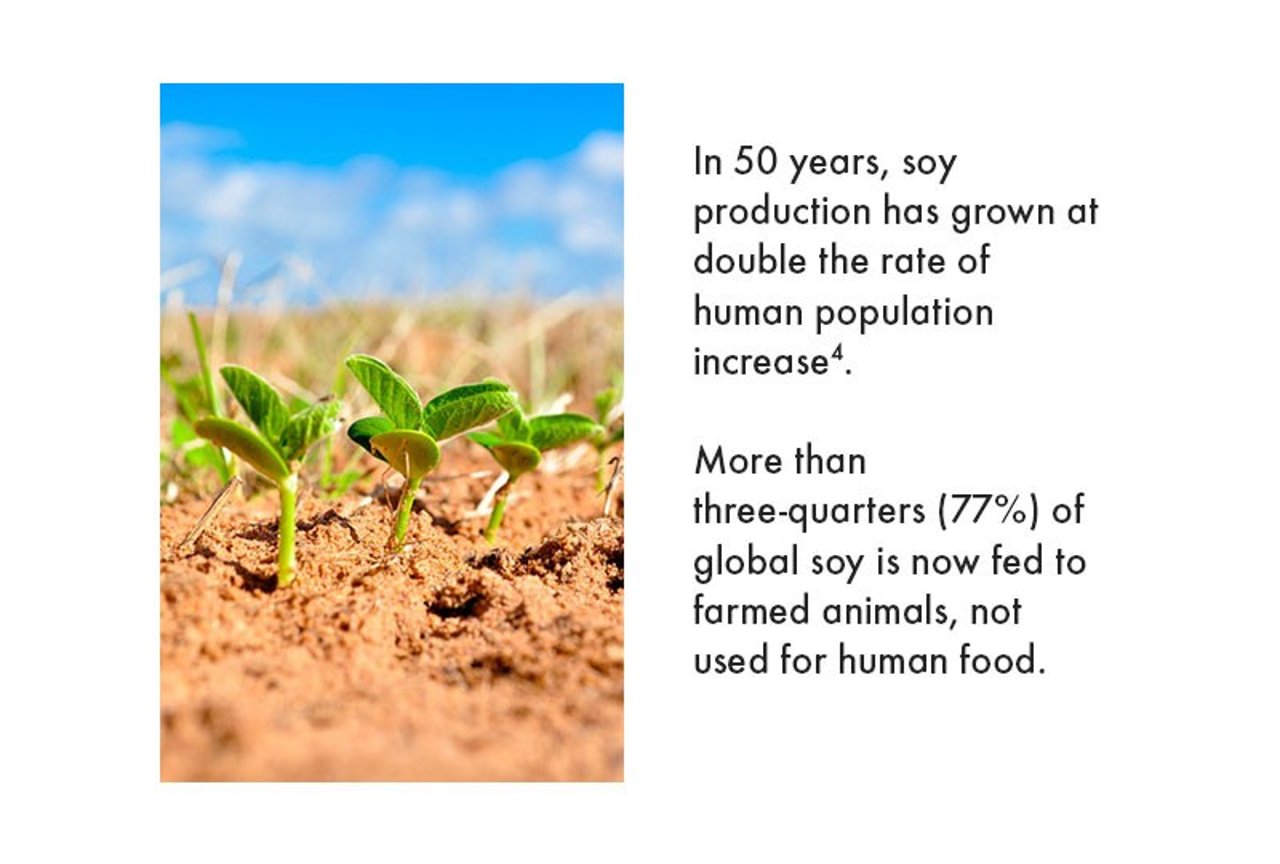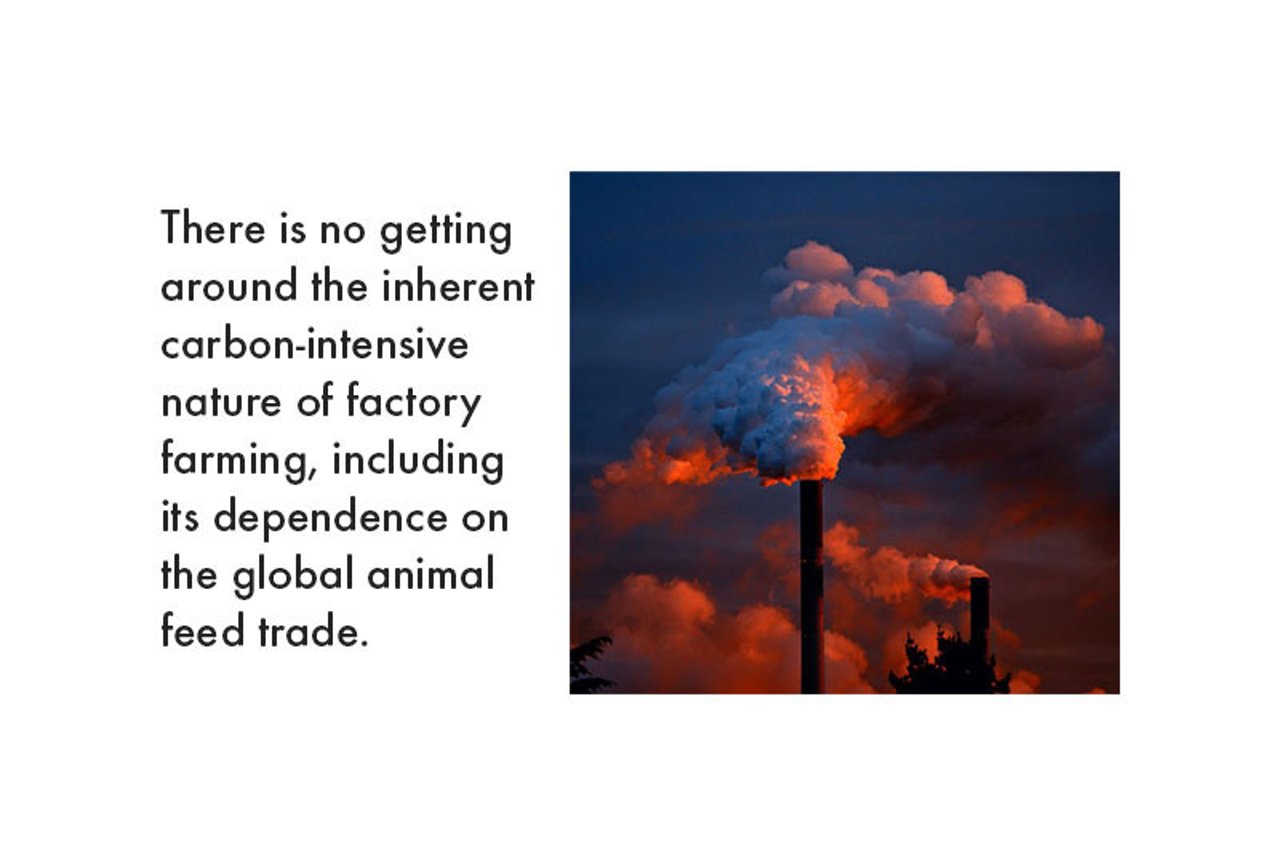
During COP26, governments must act to end factory farming, protect our climate and wildlife habitats, and save billions of farmed animals from suffering.
Climate change and factory farming
With the biggest meat and dairy companies’ climate impact now outweighing that of several developed nations1, there’s no bigger threat to the future of our planet than the expansion of factory farming.
Factory farming is almost always overlooked as the climate culprit within the agriculture sector. Yet it’s factory farming that rips down forests to plant crops for animal feed – releasing carbon into the atmosphere.
And it’s factory farming that devastates wildlife habitats, displaces local communities and profits from the cruel treatment of billions of farmed animals each year.
Rising demand for fossil fuels
Fossil fuels are used to produce fertilisers for factory-farmed animal feed. And when applied to fields, these fertilisers release harmful nitrous oxide greenhouse gasses into the atmosphere.
Overall, greenhouse gasses from factory farm animal feed production and processing represent 45% of total agricultural emissions2.
And this footprint is set to grow. Demand for meat is rising fast, paving the way for the further expansion of factory farming. Back in 1970, global beef production was roughly the same as that of chicken and pork combined.
Not only does this mean greater climate impact, it means billions more farmed animals condemned to lives of suffering. On factory farms, animals are squashed together, often kept in cages and painfully mutilated.
To cope with cruel conditions and prevent them getting sick, they are dosed daily with antibiotics in their feed or water. That’s a risky practice, creating the ideal environment for superbugs to emerge and transfer to humans via the food chain or our environment.
Animals squashed together on factory farms suffer lung problems from high ammonia levels, and manure spread on fields releases more nitrous oxide greenhouse gas into the atmosphere, as well as polluting water courses.
It’s time for action
If policymakers are to get real on climate at November’s Climate Change Conference (COP26), factory farming must be squarely in their sights.
The biggest factory farming companies continue their stranglehold on our food system off the back of misguided government policies that confuse factory farming with food security.
But the big volumes of meat, delivered at cheap prices by factory farming, rest on a paradox. Food security is undermined as land is diverted to grow crops to feed animals rather than humans.
Local farmers are caught up in a profit-driven global trade in commodity crops for factory farms, meaning local communities go hungry.
Factory farming worsens climate change, and climate impacts are felt disproportionately by small farmers. Adverse weather causes their crops to fail or their livestock to succumb to disease. Wild animals suffer agonising deaths from droughts, floods and fires at greater frequency and severity.
Animals are less resilient to disease and habitat destruction from animal feed expansion, increasing the risk of disease spill-over from animals to humans. There is a strong risk that intensive agriculture could trigger the next pandemic5.
Factory farming businesses are failing
Big factory farming businesses are doing their best to cover over their cracks with a rapid increase in the number of ‘carbon neutral’ commitments. This includes promising to reduce emissions intensity of business-as-usual practices via technological breakthroughs, like changing feed formulations for animals6.
But minor tweaks to reduce emissions won’t be enough while overall meat production continues to grow sharply.
Businesses are also buying their way out of their obligations by calculating their climate impacts and paying to ‘offset’ the damage via schemes that remove carbon from the atmosphere, such as tree planting.
This is nothing short of greenwashing, and the ultimate irony is that by locking land into crop production for feeding factory-farmed animals, there is little land left to reforest.
It’s clear that factory farming is winning while our climate and wildlife suffers. Farmed poultry now makes up 71% of all bird species by mass, whereas wild birds make up just 29% of total bird species by mass7.
What can governments do about industrial farming?
A fundamental change is needed to our food system for the sake of our climate and our planet. Governments should not be sticking their heads in the sand.
They should:
- Commit to reject plans for further factory farms to limit their expansion
- Ensure government regulations make factory farming redress its many harms – to climate, the environment and our health
- Change subsidies and incentives so they support a predominantly plant-based food system, and a diversified livestock farming sector with smaller numbers of animals produced overall
- Tackle big farming monopolies, with support given to ensure access to affordable and nutritious protein for all, including those in low-income countries.
If we act to end factory farming now, we can make a positive change for our climate, protect precious habitats, support local communities and release billions of animals from a life of cruelty and pain.
References
1 IATP, GRAIN, 2018, Emissions impossible / How big meat and dairy are heating up the planet, https://www.iatp.org/emissions-impossible
2 Key facts and findings, https://papersowl.com/discover/key-facts-and-findings
3 IATP, GRAIN, 2018, Emissions impossible / How big meat and dairy are heating up the planet, https://www.iatp.org/emissions-impossible
4 Figures taken from Roser et al, Our World in Data / World Population growth, https://ourworldindata.org/world-population-growth#how-has-world-popula…. De Maria et al, Trade, Development and Environment Hub, Global soybean trade: the geopolitics of a bean, https://tradehub.earth/wp-content/uploads/2020/10/Global-Soybean-Trade-…
5 UNEP, 2020, Preventing the next pandemic: Zoonotic diseases and how to break the chain of transmission, https://www.unep.org/resources/report/preventing-future-zoonotic-diseas…
6 Meda et al, Science Direct, Reducing environmental impacts of feed using multiobjective formulation: What benefits at farm gate for pig and broiler production?, Volume 15, Issue 1, January 2021, https://www.sciencedirect.com/science/article/pii/S1751731120300240
7 Bar-On et al, The biomass distribution on Earth, Proceedings of the National Academy of Sciences of the United States of America, Volume 115 Issue 25, May 2018. doi: 10.1073/pnas.1711842115.
Join our community
We campaign to improve animal's lives in the UK and around the world. Why not join us today?
Image credits: blog page: Luiz Claudio Marigo/naturepl.com; main page: Header: Bence Mate/naturepl.com; chicken slaughter house: world animal protection/Helene O'Donnell; Soy plants: Charles Echer/Pixabay; Industrial scene: JuergenPM/Pixabay
Minor tweaks to reduce emissions won’t be enough while overall meat production continues to grow sharply


